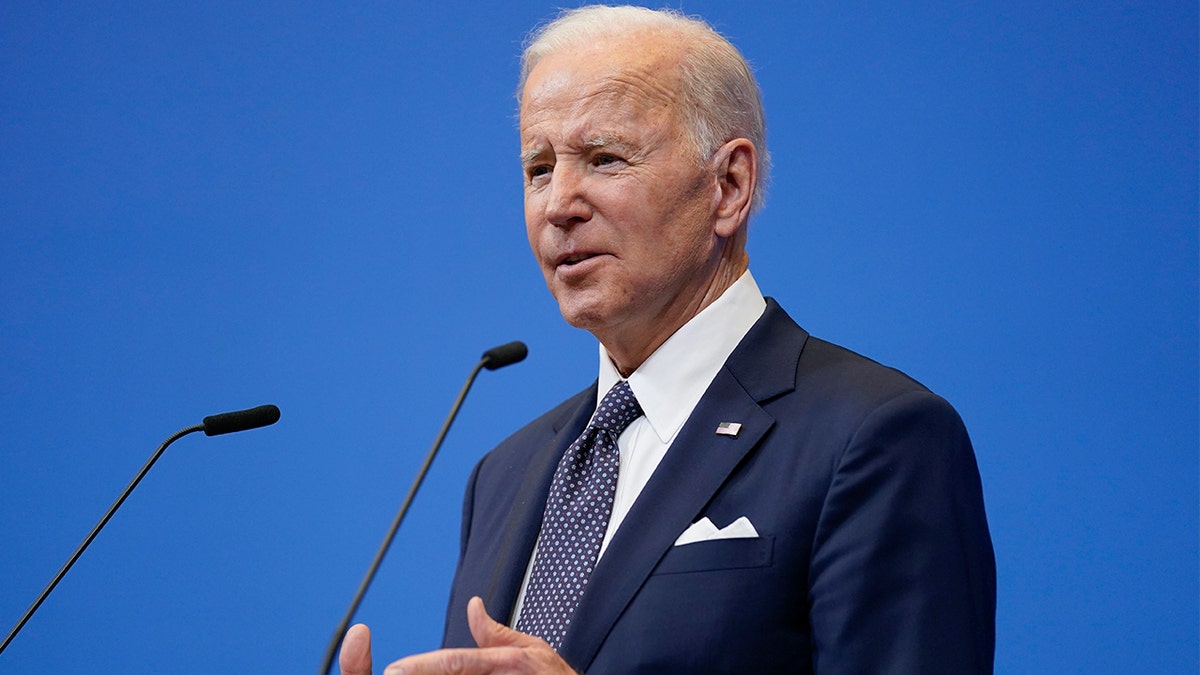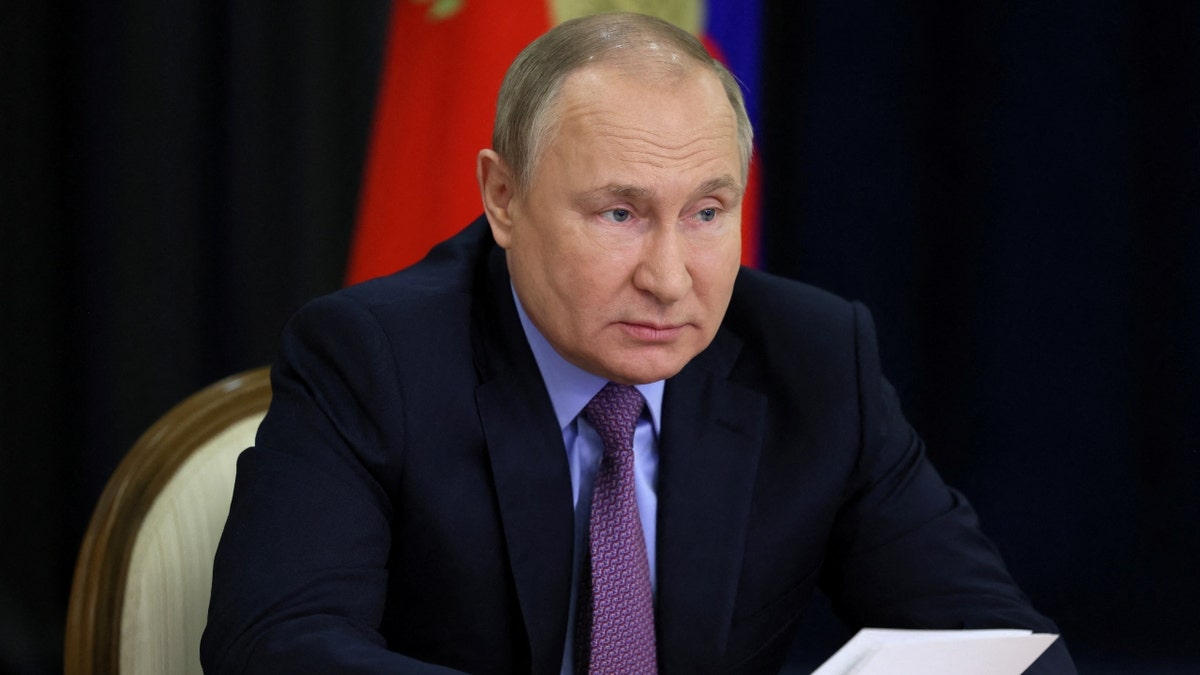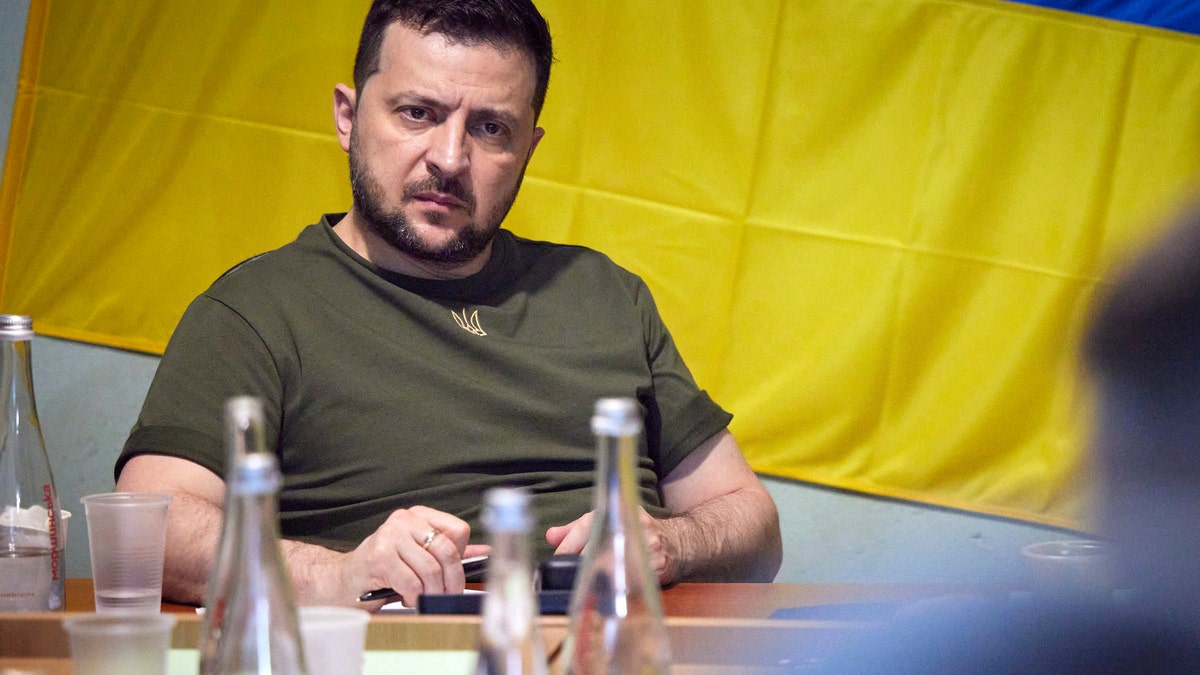Putin has no consideration for anyone: Rebekah Koffler
Russian-born former U.S. intelligence officer weighs in on Russia waging war on Ukraine on 'Jesse Watters Primetime.'
The U.S. and the West are amping up security aid to Ukraine with high hopes they can turn the tide back in its favor and force Russian President Vladimir Putin to halt his brutal assault. But, he won’t. Here are five reasons why.
1. Putin believes that he has forced a tipping point both on the battlefield and off after capturing about 20% of Ukraine’s territory. Russian forces occupied fully the strategic city of Severodonetsk at the end of June and on Sunday captured Lysychansk in the Donbas region, establishing full control of Ukraine's industrial heartland, with iron and steel producing factories and high quality coal and mineral reserves.
Having all but finalized the land corridor between Crimea, which Moscow annexed in 2014, and Russia proper, Putin is blockading Ukraine’s access to seaports, strangling Ukraine’s economy by preventing exports of grains by ships. With another three months left before the battlefield conditions deteriorate due to weather, Putin feels he can make more strategic gains while continuing to degrade Ukraine’s infrastructure and ability to defend itself.
UKRAINIAN ORPHANS STRANDED AS AMERICAN FAMILIES STRUGGLE TO SAVE THEM FROM WAR
Consistent with Putin’s doctrine of "escalation dominance," Russia is intensifying missile bombardment across Ukraine as Washington is amping up the scope and scale of weaponry pledged to Kyiv.

President Biden speaks about the Russian invasion of Ukraine after a NATO summit and Group of Seven meeting, March 24, 2022, in Brussels. (AP Photo/Evan Vucci)
2. Putin believes economic sanctions have backfired on the West, which faces skyrocketing oil and gas prices, as well as food shortages.
The unprecedented economic sanctions placed on Russia by the West not only haven’t destroyed the Russian economy, they’ve strengthened it. Russia’s oil earnings are booming and the ruble hit its strongest level in seven years, enabling Putin to continue financing his war machine.
Germany’s economy is facing potential collapse, possibly dragging down the rest of Europe with it, rationing natural gas usage as a result of Russian cuts to the flow. Meantime, the U.S. economy is almost entering recession.

President Vladimir Putin chairs a meeting on the country's transport industry via a video link in Sochi, Russia May 24, 2022. (Sputnik/Mikhail Metzel/Kremlin via Reuters)
Much has been made of Russia’s default on its foreign debt for the first time since 1918, but Putin is likely not terribly bothered. Moscow sent a payment, but the compliance issues related to sanctions prevented it from being distributed. Besides, Putin knows that the default hurts the lender more than the borrower.
3. Putin senses that war fatigue is starting to take hold in the West, despite the U.S. and European leaders’ public displays of support for Kyiv. Biden administration officials reportedly are losing confidence in Ukraine’s ability to win the war and are privately discussing the possibility of Ukraine President Vlodymyr Zelenskyy ceding land to Putin.
4. In three months, Putin will be able to inflict even more pain on the Europeans with his "energy attacks" while gaining greater ability to distract the West from his rampage through Ukraine.

Russian airstrikes hit a shopping mall in Kremenchuk, Ukraine, on June 27, 2022, according to President Volodymyr Zelenskyy. (Ukrainian President Volodymyr Zelenskyy Telegram)
As the temperature drops and Western Europe begins to shiver, support for confronting Russia will also freeze up, he believes. Cutting off gas to coerce European leaders to abandon their support of Ukraine is a standard tool in Putin’s playbook.
At the same time, the United States will be preoccupied with the midterm elections, likely making Ukraine much less of a priority for Washington. Putin’s intelligence services closely monitor U.S. domestic affairs, zeroing in on controversial issues, such as the Supreme Court’s recent decision on abortion, gun control, and the protests sweeping the country. Putin will likely direct his spy services to run influence campaigns, amplifying discord and its resulting distractions through social media and clandestine operations, as he has in the past.
Putin also plans on targeting the U.S. homeland with cyberattacks, according to the U.S. Cybersecurity and Infrastructure Security Agency, in retaliation for the sanctions, to create disorder, and so Washington takes its eyes off Ukraine.

Ukrainian President Volodymyr Zelenskyy attends a meeting with military officials as he visits the war-hit Mykolaiv region on June 18, 2022. (Ukrainian Presidential Press Office via AP)
5. Finally, the outcome of the conflict in Ukraine is an existential issue for Russia. Putin declared Ukraine as a "red line" for NATO expansion because, whether justified or not, Russia views the country as part of its strategic security perimeter.
CLICK HERE TO GET THE OPINION NEWSLETTER
With NATO’s admission of the Baltic states, the distance between NATO forces and Russia has been reduced from 1,000 miles during the Cold War to 100 miles today, making the risk of having an adversarial military alliance so close to Russia’s borders unacceptable, in Russia’s view. Moscow has always been suspicious of the U.S. policy of democracy promotion and the strengthening of NATO, especially after the collapse of the Soviet Union.
Putin believes that U.S. policy of democratizing what Russia views as its sphere of influence is here to stay, regardless of who occupies the White House. A declassified top secret strategy report describes long-term bipartisan U.S. policy as seeking to prevent "a single hostile power," such as Russia, "from dominating the Eurasian landmass" and "to assist democratic and nationalist movements where possible in the struggle against totalitarian regimes."

Turkish President Recep Tayyip Erdogan, left, and NATO Secretary General Jens Stoltenberg before signing a memorandum in which Turkey agrees to Finland and Sweden's membership in the defense alliance in Madrid, Spain, on Tuesday, June 28, 2022. (AP Photo/Bernat Armangue)
CLICK HERE TO GET THE FOX NEWS APP
This report, similar writings by Western think tanks, and recent admissions by Biden administration officials of Washington’s goal to weaken Russia economically and militarily, justify, in Putin’s view, the war on Ukraine. As long as Russia keeps this conflict alive, even if it turns into a grinding protracted battle of attrition, Russia’s strategic goal of keeping Ukraine out of NATO is met by virtue of Ukraine not meeting one of the key requirements for the membership – absence of territorial disputes and ongoing conflict.
This trajectory of this war, with its changing battlefield landscape, has proven difficult to predict. But one thing is certain. Putin will not make it stop.





















